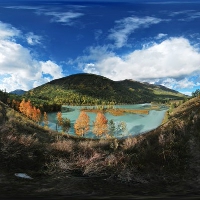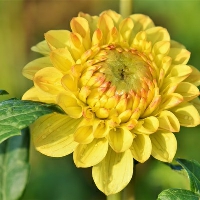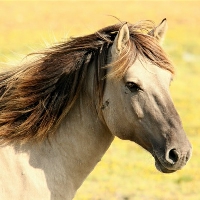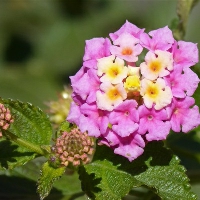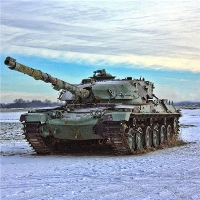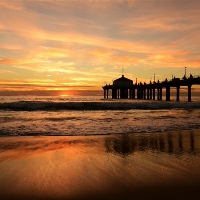一本教会你“做对”题的6级阅读书 day2 passage3
Passage 3 The Great Pacific Cleanup
太平洋中的超大“垃圾堆” 《新闻周刊》2009-6-18 036
The Great Pacific Cleanup
Since the Great Pacific Garbage Patch,
the world's biggest communal garbage dump,
was discovered swirling about 1,000 miles north of Hawaii in 1997,
scientists and environmentalists have dared to dream
if a cleanup might be possible.
Consisting of an estimated 3.5 million tons of garbage
and scattered over an area roughly the size of the continental United States,
the garbage comes from countries all over the world,
most of it flushed through waterways leading to the ocean.
Once there, the Pacific rotating system of ocean currents
traps the garbage in its final resting place,
where it has gathered with wreckage from ships and fishermen,
and did widespread destruction to fish and seabirds.
[01:00]Now an unlikely partnership between ocean scientists
[01:04]and the waste-management industry is working on ways to clean up the mess.
[01:09]Earlier this fall, two vessels with the Ocean Voyages Institute in Sausalito,
[01:15]California, headed toward the patch.
[01:19]Most of the scientists on board each ship
[01:22]had previously seen the massive expanse of plastic shallowly submerged
[01:27]over thousands of square miles. It's not densely packed,
[01:31]so you can't walk on it or spot it from a boat,
[01:35]and it's impossible to spot from satellite photos,
[01:38]as much of it remains just below the surface.
[01:42]The project goal for the mission,
[01:45]named Project Kaisei (meaning "ocean planet" in Japanese),
[01:49]was not to measure the size with precision,
[01:53]but to test several methods of extracting the plastic
[01:57]and finding ways to dispose of it properly, ideally through recycling.
[02:02]Testing methods of getting the larger items—plastic chairs,
[02:07]large toys—turned out to be easy.
[02:10]But that still left the much bigger amount of smaller items,
[02:14]like partially broken down toothbrushes, combs, and bottle caps—
[02:18]all of which can't be as easily collected.
[02:23]"The smaller pieces are the ones that are concerning,
[02:26]" says Mary Crowley, Kaisei's project leader and a lifelong ocean explorer.
[02:32]"That's what fish and birds may be eating,
[02:35]and it's terrifying how widely they're being distributed."
[02:39]There's no perfect way to fish it all out of the ocean,
[02:43]especially not without harming ocean creatures in the process.
[02:47]But the crew tested several possible methods. Some were active,
[02:52]involving the dragging of nets to trap and concentrate the garbage to be collected.
[02:58]Others were passive, consisting of large floating receptacles placed
[03:04]near highly concentrated areas and then picked up later to dispose
[03:08]of its contents back on land. The latter, Crowley found,
[03:13]is an applicable and seemingly acceptable way to collect at least the big items.
[03:19]Next comes the difficult task of figuring out
[03:22]what to do with the collected garbage.
[03:25]In his book about the manufacturing process Cradle to Cradle,
[03:30]William McDonough details how disposing of garbage really means
[03:34]just moving it to some other place.
[03:37]The millions of tons of garbage from the Pacific need to go somewhere,
[03:42]and ideally not into landfills, which is why Crowley has a Rolodex
[03:47]of almost a dozen waste-management and recycling companies with
[03:51]which she's collaborating on several possible recycling methods.
[03:57]The leading method is a process called pyrolysis, a form of turning waste into oil
[04:03]or other forms energy without burning. By heating input—in this case,
[04:09]floating drops of plastic—upwards of 550 degrees Fahrenheit in a vacuum,
[04:16]much of the waste breaks down. Further processing then converts the substance
[04:22]to a form of synthetic oil.
[04:24]The good news is that the process can take about 85 percent of the plastics
[04:29]in the Pacific, most of it forms of polyolefin.
[04:33]In some areas of the rotating system of ocean currents,
[04:37]bottle caps are by far the most abundant, primarily
[04:41]because they're manufactured to be denser, and endure longer,
[04:45]than the bottles they seal. According to Pio Goco,
[04:49]a vice president with pyrolysis firm Envion,
[04:53]bottle caps and virtually all forms of polyolefin make excellent material
[04:58]for the pyrolysis process. The oil generator, about the size of a suburban home,
[05:05]could be mounted on a tanker or smaller rig while smaller boats,
[05:10]out collecting waste, continue to feed it.
[05:13]Envion is already testing the process of converting waste
[05:17]to oil in Montgomery County, Md.,
[05:21]which the company says has been a successful demonstration of the technology.
[05:26]"It's a process that drastically changes the dynamics of plastic waste,
[05:31]" says Goco. "When you put it in a landfill, it's gone, and it affects us all.
[05:37]But when you convert it to oil, you can sell it or store it somewhere safer."
[05:42]Still, the process isn't cheap. Each pyrolosis rig costs about $7 million,
[05:49]plus annual maintenance. Advocates argue that the cost can be recovered
[05:55]over several years if the oil that it produces is sold,
[05:59]and even faster if the price of oil rises again. Still,
[06:04]the cost illuminates a less expensive, and perhaps easier, idea.
[06:10]In the mind of Mel Ettenson, editor of the industry publication
[06:16]The Global Plastics Letter, the simplest method is to let the sun's rays
[06:21]break down the plastic with help from highly concentrated UV lights
[06:26]that could be brought to the area.
[06:29]Blasting it with water bombs would accelerate the process.
[06:33]But even if the plastic is gone,
[06:35]its broken-down leftovers won't make the ocean any healthier.
[06:40]To some, the best solution might be to do nothing at all.
[06:45]A massive heap of the world's garbage moving to a relatively isolated
[06:51]part of the globe means that same garbage isn't being buried in landfills
[06:56]and left to potentially pollute land-based water supplies.
[07:00]Ocean advocacy group Oceana sees the north Pacific
[07:05]as one of the most concerning cases of ocean degradation worldwide.
[07:11]"The way to start solving this problem is to stop making it worse,
[07:16]" says Jackie Savitz, campaign director for Oceana.
[07:20]In other words, any discussion about
[07:24]how to clean it up ignores the underlying fact that it's growing larger
[07:28]every day as more garbage is added.
[07:33]According to industry statistics,
[07:35]Americans use 2.5 million plastic bottles every hour,
[07:40]more than half of which end up not being recycled.
[07:45]Environmental groups have focused their anger on the plastics makers,
[07:49]a nearly $400 billion annual industry in the U.S.
[07:54]that continues to grow as plastics become more versatile.
[07:58]The eco talking point is that if plastics makers
[08:03]were to recognize the impacts their products were having on the oceans
[08:08]and global wildlife, they would stop making them.
[08:12]"That's like saying we know cars are bad for the environment,
[08:16]let's get them all off the road now,
[08:19]" says the plastics industry's Ettenson.
[08:22]The problem—as well as the solution—
[08:25]may very well come to a more introspective approach.
[08:29]Kevin Short, co-chair of environmental efforts
[08:32]for the International Association of Plastics Distribution,
[08:36]says that he and colleagues are
[08:40]"organizing to divert plastics away from landfills,
[08:43]" though a process that he calls reverse distribution—
[08:46]a responsible way to collect plastic waste
[08:49]during the manufacturing process that might otherwise end up being buried
[08:54]underground or in the oceans.
[08:56] Even if environmentalists and industry can succeed in changing human behavior,
[09:02]and stop adding garbage to the Pacific patch,
[09:06]its immensity means it's not going anywhere soon.
[09:10]Captain Charles Moore, who discovered the floating garbage in 1997,
[09:16]has already admitted defeat. To him, it would take seemingly endless time
[09:23]and would bankrupt any nation that confronts it. Still Crowley
[09:28]and her team of researchers keep trying. Next year,
[09:32]Kaisei will bring back 100 tons of garbage to process into oil by pyrolysis.
[09:39]But the goal, says Crowley, is to win minds.
[09:43]"We want to show people that the process is indeed possible,
[09:47]and if done right, even profitable."
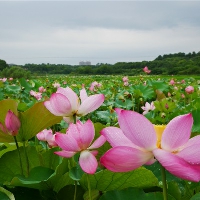 踩死猪 2022-10-17 18:12:40
踩死猪 2022-10-17 18:12:40
